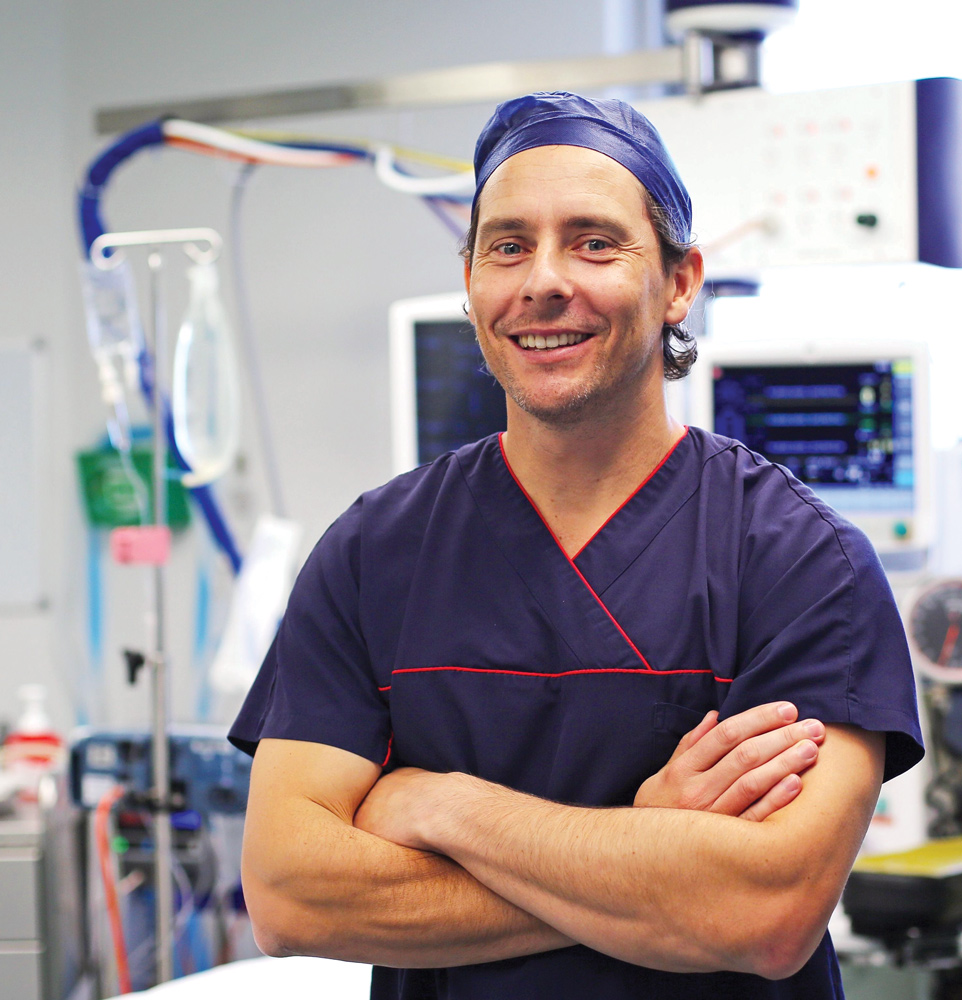To facilitate successful return to sport, ACL injury management requires multidisciplinary approach involving the patient’s GP, physiotherapist, sports physician and sports orthopaedic surgeon.

ACL ruptures remain a common injury sustained by young, athletic individuals, with a peak age of 15-19 for females and 20-24 for males. Accurate diagnosis is key, with detailed physical exam and MRI to assess for concurrent injuries, particularly to menisci, chondral cartilage and ligamentous structures.
Each treatment program is tailored to promote the highest chance of successful return to sport and activity.
Case example
A 20-year-old representative level netballer landed awkwardly during a competitive netball game and felt her knee give way with severe pain. The knee swelled immediately.
On review, Sarah had sustained a ruptured ACL and MCL damage, confirmed on subsequent MRI, with associated large medial meniscus tear. Given her young age, high level sporting commitments and the complex nature of her knee injury, Sarah is undergoing a period of ‘prehab’ with an experienced sports physiotherapist.
Prehab is followed by reconstructive surgery with meniscal preservation and a comprehensive post-operative rehabilitation program supervised by her orthopaedic surgeon, sports physiotherapist and strength and conditioning coach.
It was previously acceptable to delay diagnosis of a sports-related knee injury; apply RICE (Rest, Ice, Compression and Elevation), clinically assess the knee, and apply a soft-structured treatment program. With advances in MR imaging quality and availability, as well as surgical sub-specialisation, early diagnosis of soft tissue injury is now the standard.
Patient awareness of ‘ACL rupture’ and ‘knee reconstruction’ is also growing, prompting increased presentation for specialist advice and treatment soon after injury.
Imaging indications and management
There are key features in clinical assessment which should alert the clinician to the need for additional investigation and imaging (MRI). These include:
- Injury was sustained from a non-contact, pivoting manoeuvre or awkward landing (at least two-thirds of ACL injury are non-contact injuries)
- Initial inability to weight bear
- Hearing a ‘pop’ at time of injury
- Early knee swelling
- A feeling of instability in the knee
- Previous instability episodes, and
- Similar occurrences or previous injury to the other knee
Additionally, an index of suspicion or diagnostic uncertainty also warrants referral for specialist opinion and/or further imaging.
Surgical versus non-surgical options for ACL injury management are topical. Patients are inundated with information from practitioners, peers, and even social media. As such, patients may query not ‘when,’ but ‘if’ ACL reconstruction is warranted.
Best management depends on patient factors and associated injuries to the knee joint. For some, early surgery after a period of prehab is the evidence-based pathway for return to best function. The younger the patient, the more likely they are to benefit from reconstructive surgery. Similarly, the higher their level of sports participation, the more beneficial reconstructive surgery can be.
Critically, associated meniscal and chondral cartilage injuries warrant surgical intervention for stabilisation and prevention of injury related joint degeneration.
On the contrary, patients who have ‘pure’ ACL injuries (with no meniscal, chondral or concomitant ligamentous injury), do not suffer from instability, swelling or mechanical symptoms and are generally those who play social as opposed to competitive pivoting sports are candidates for a non-operative approach.
If there is progression or non-resolution of symptoms, surgery can always be considered later.
A multidisciplinary approach when managing ACL injury, regardless of whether opting for operative or non-operative treatment is important. Usually, the patient spends most of their treatment time with their physiotherapist working on proprioceptive control, followed by strength and conditioning.
There are circumstances where early surgery is indicated, primarily due to a structural issue blocking movement (classically a bucket handle meniscal tear) or more complex injury pattern. However, a period of prehab focusing on swelling management, restoring range of motion, gait normalisation and initial strength recovery is crucial in setting the patient up for a successful return to sport after treatment.
In most instances, allowing the knee to ‘cool down’ and getting the patient comfortable with the knee is an important goal to achieve prior to undergoing any surgical treatment.
Successful return to sport
This is one of the most frequently asked and most difficult questions to answer. In practice, the actual return to sport will vary widely from patient to patient. After ACL reconstruction, patients can theoretically return to running at three to four months, sports specific training at six months and full return to sport from nine months.
However, complex injuries and the addition of meniscal or chondral pathology add time to a treatment plan. The importance of a steady, evidence-based rehabilitation program, which is especially important in young (particularly skeletally immature) and elite level athletes, is increasingly recognised.
I often talk about satisfying three people when considering a return to full sport:
- The physiotherapist / exercise physiologist who often has an intimate knowledge of the physical recovery.
- The surgeon, or sports physician – it’s important there is no overt instability in the knee, recurrent swelling, or loss of motion.
- The patient – needs to feel ready to return to the rigours of their chosen sport. This includes both physical and psychological readiness, with research demonstrating each one is as important as the other.
ACL injuries are common, particularly in young athletes. History and examination findings can alert the practitioner to the possibility of ACL injury and warrant further investigation with MRI and specialist opinion. Input from all members of the multidisciplinary team with a structured ‘prehab’ and ‘rehab’ program provides the patient with the best chance of successful return to sport.
Key messages
- Accurate diagnosis is key – knee swelling, instability episodes and traumatic sporting injuries warrant referral for MRI and specialist review
- Multidisciplinary input including evidence-based rehabilitation is critical to recovery
- Surgical treatment decisions depend on associated injuries and patient factors.
Author competing interests – nil

